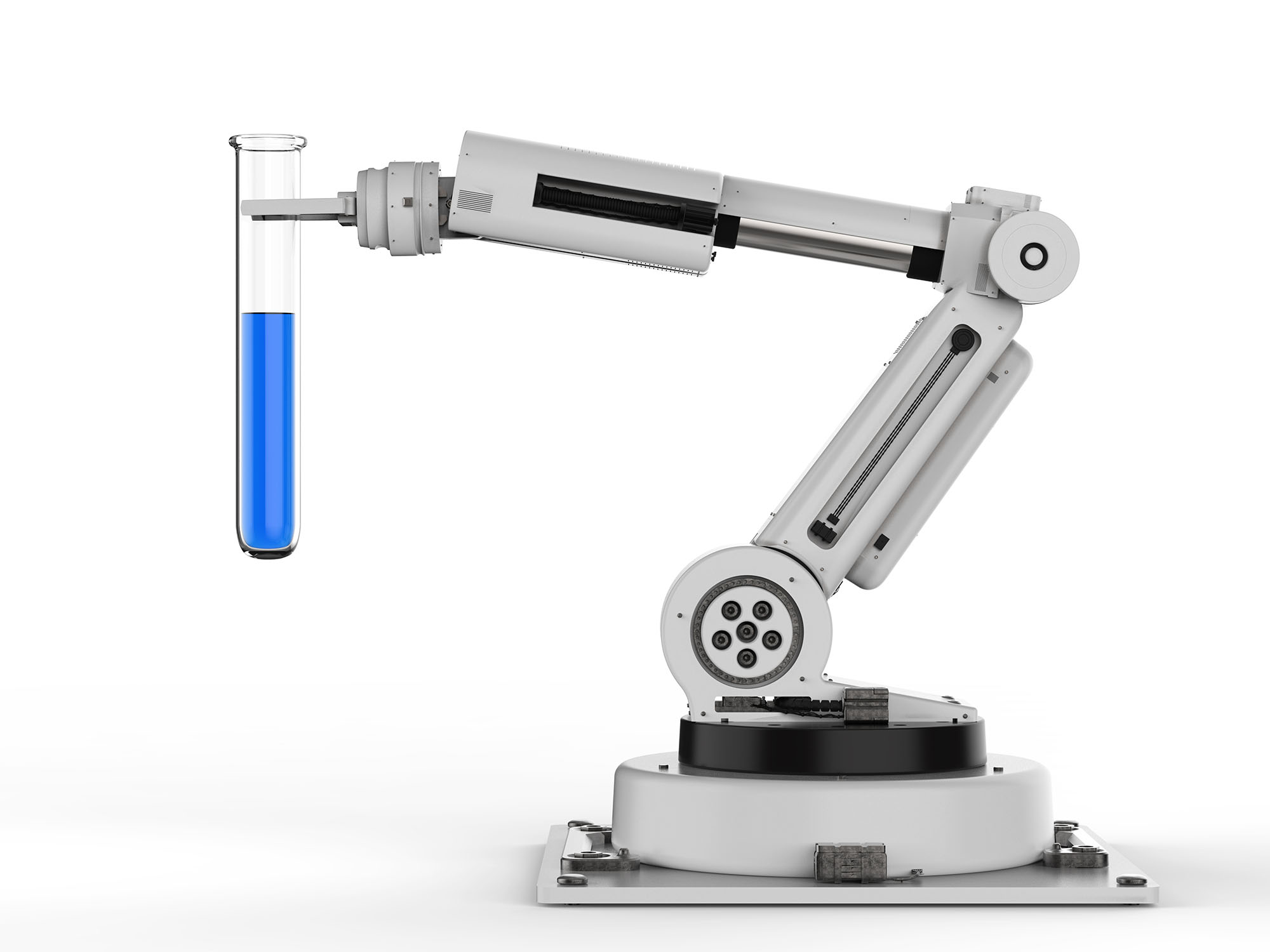Back in October, I wrote an article on automated centrifuges and the advantages of using such equipment in the lab. In this month’s blog, I will give an overview of laboratory robotics in general and answer some common questions asked by laboratory users.
What are laboratory robotics?
Before we start, we need to understand what we mean when we say ‘laboratory robotics’. Laboratory robotics refers to the use of robotic systems and automation technologies to perform tasks in scientific, medical and industrial laboratories. These systems are designed to handle repetitive tasks in a precise manner. They often handle complex processes, thus improving efficiency, accuracy and reproducibility. In addition to this, a robotic system in a laboratory will reduce the risk of human error or contamination. Robotic systems can be combined with traditional labware and equipment to create a more streamlined solution. The main aim of any robotic system is to improve efficiency, precision and productivity of laboratory workflows.
Common types of laboratory robotics
It is important to understand that the world of laboratory robotics is rapidly changing. New technologies are being created all the time. Therefore, it is impossible to detail exactly where robotics can be found in the laboratory. However, below is a list of some of the most common types of laboratory automation at the moment:
Liquid Handling Robots: To automate pipetting and reagent distribution. Robotics can be used in this instance which would otherwise be carried out manually. Manual liquid handling is time consuming and can lead to errors.
Sample Handling Robots: To transfer and organise samples between various instruments or storage units. This can be achieved with the use of a robotic arm which moves microplates or sample tubes for processing.
Analytical Robots: Integrated with instruments to handle workflows such as mass spectrometry or chromatography. Robots can be used to automatically capture images of samples and carry out necessary tests.
Mobile Robots: To transport samples and materials between stations within a lab.
Applications for laboratory robotics
There are many applications for robotics in the laboratory and these are changing all the time. Below are some examples of areas where robotics can be used:
Pharmaceutical Research: Robots are used in drug discovery, high-throughput screening and compound testing.
Clinical Diagnostics: Automation in laboratories supports tasks like blood testing, DNA sequencing, and immunoassays.
Biotechnology: Robots assist in genetic engineering, protein crystallisation and cell culture handling.
Chemical Analysis: Robotic systems perform tasks in analytical chemistry, including chromatography and spectroscopy sample preparation.
Food and Beverage Testing: They help ensure compliance with safety standards by analysing samples for contaminants.
Advantages of using laboratory robotics
There are a number of key advantages to using robotics in your laboratory including:
- Enhanced productivity and throughput.
- Reduction in labour costs and manual effort.
- Improved safety, especially when handling hazardous substances.
- Increased reliability and data quality.
Disadvantages of using laboratory robotics
- High initial costs of purchasing and implementing systems.
- Requirement for specialised training and expertise.
- Maintenance and calibration demands.
- Integration with existing workflows and systems.
Summary
Laboratory robotics is a rapidly evolving field, incorporating advancements in artificial intelligence, machine learning and sensor technology to create smarter, more versatile systems. To be honest, I have only just scratched the surface of this topic in this article. The field of robotics is wide ranging and takes years of dedication to fully understand it.
One thing is for sure is that robotics is here to stay and we will certainly see more examples of it in laboratories throughout the UK and beyond. The advantages far outweigh the disadvantages. We also expect the initial cost to come down as the technology improves in the future.
How Henderson Biomedical can help
Henderson Biomedical is the exclusive UK partner of Hettich’s range of automated centrifuges. This means we can supply their robotic centrifuges to end users based in the UK and also provide first-class after sales technical support and calibration. Furthermore, we are also able to offer service and calibration of other robotic devices such as Hawo’s SealBOT.
For more information on how we can help you with regards to your automation needs, please contact us using our online form or give us a call on 020 8663 4610.
Image from Phonlamaistudio via Freepik









